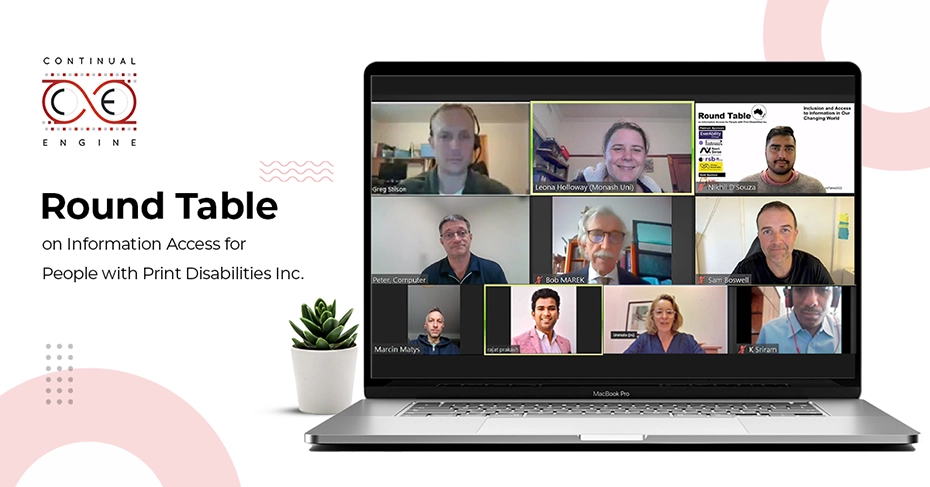How do we ensure the 1 billion visually-challenged and print-disabled people have equal access to all the information and content? The solution was addressed at the e-workshop hosted by ANZAGG (Australia & New Zealand Accessible Graphics Group) on the 18th of May, Mr. Rajat Prakash and Dr. K Sriram took part on behalf of Continual Engine.
Making Graphics Accessible with Invicta™
Invicta’s AI algorithm is trained extensively on millions of images, ensuring alt text with high accuracy and consistency at a fraction of the cost and turnaround time. In addition, dedicated in-house subject matter experts review, edit, and deliver the content based on the client’s preferred format. This ‘expert-in-the-loop’ feature has allowed Invicta to provide a scalable, cost-effective solution for leading educational institutions, publishers, and content providers across the world, including Pearson Education and Macmillan Learning. The alt text generated by Invicta is certainly a disruptive & innovative way to access specialized content for visually challenged & print disabled users. Upon hearing about Invicta, the participants seemed excited and thrilled, Mr. Nikhil D’Souza from NextSense commented, “It is fascinating technology! “
Workshop Overview
Group Photo from the ANZAGG Workshop
First row – from left to right- Greg Stilson (APH), Leona Holloway (Monash University), Nikhil D’Souza (NextSense),
Third row – from left to right- Marcin Matys (TEXTURE), Rajat Prakash (Continual Engine), Angela Reynolds (Guide Dogs NSW), K. Sriram (Continual Engine)
